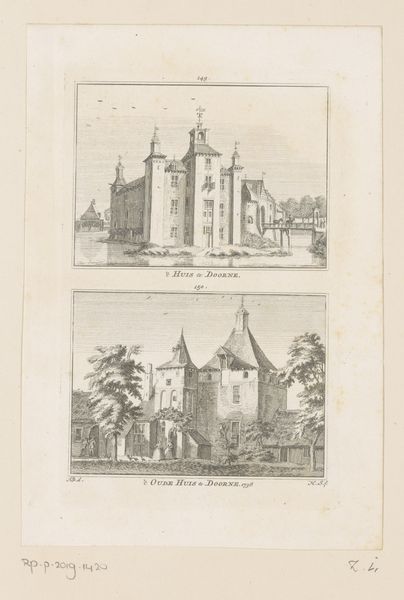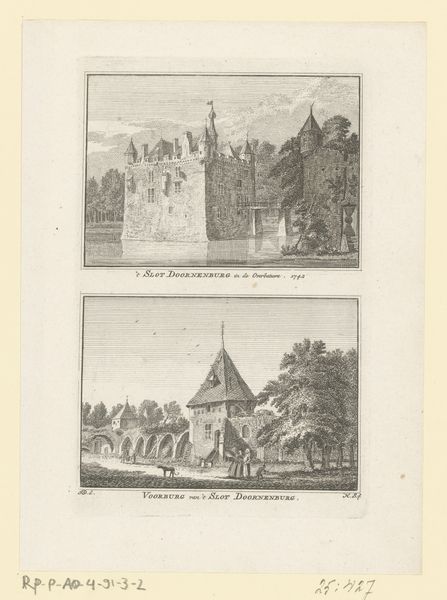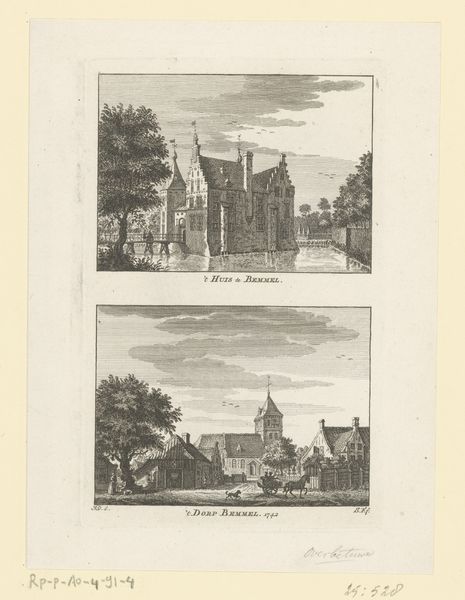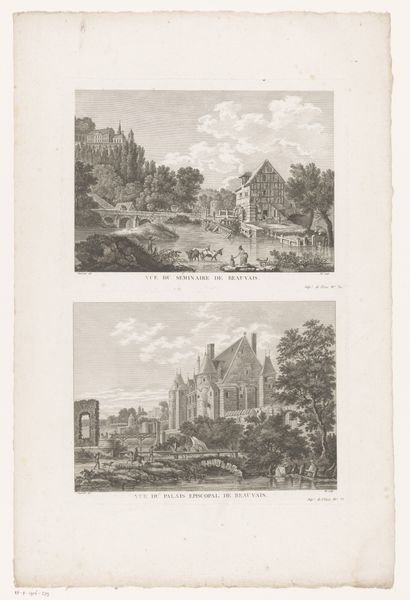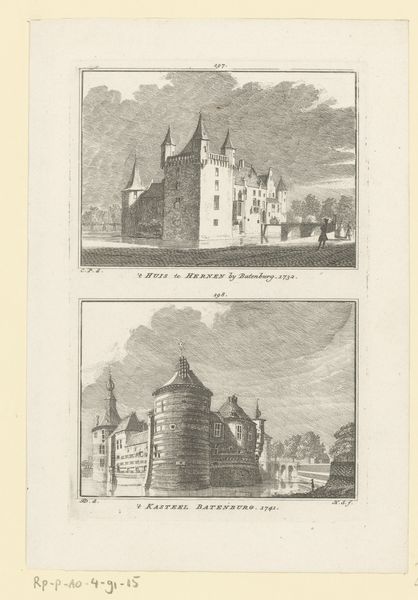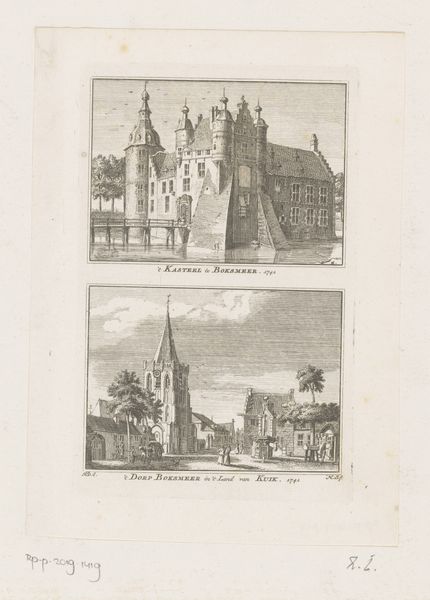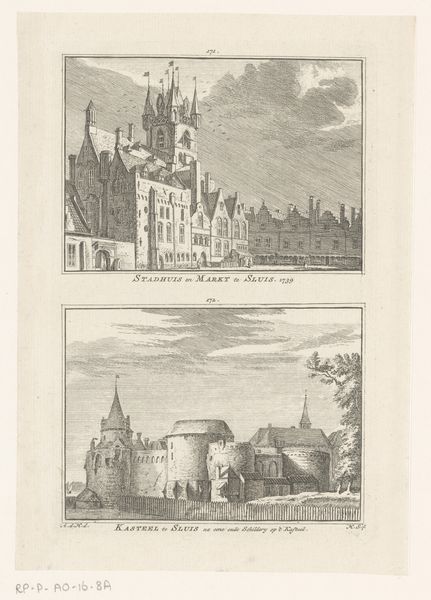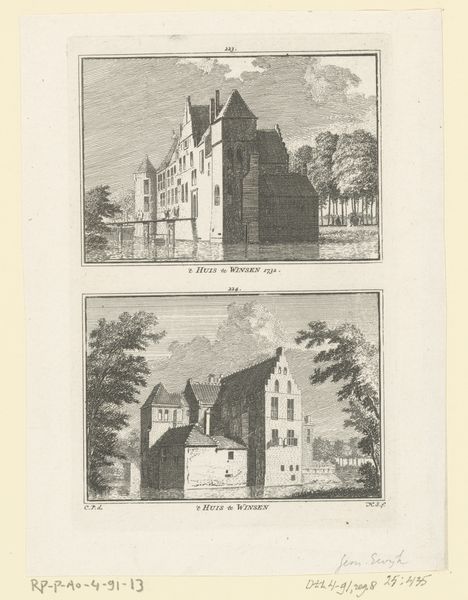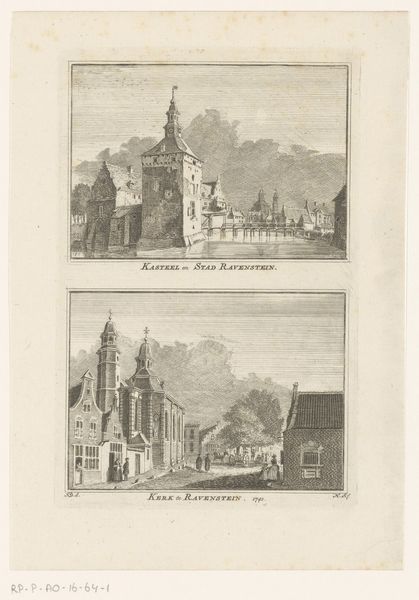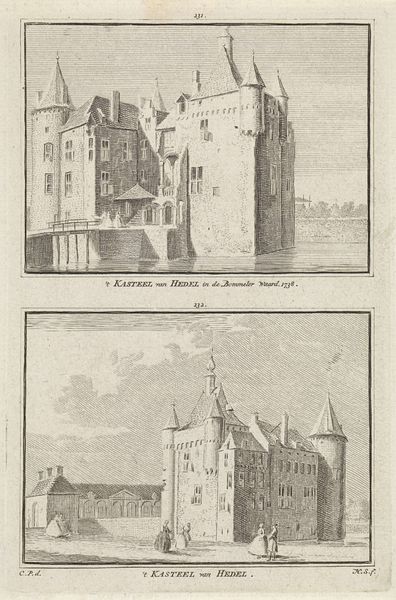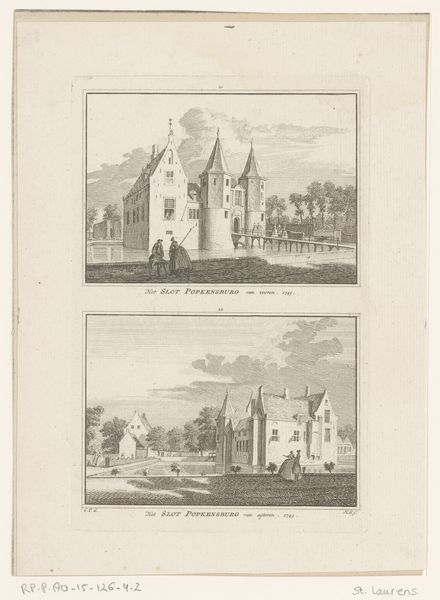
Gezichten op De Blauwe Camer en de ruïne van Kasteel Strijen in Oosterhout 1746
0:00
0:00
print, engraving
#
baroque
# print
#
landscape
#
cityscape
#
engraving
#
monochrome
Dimensions: height 168 mm, width 108 mm
Copyright: Rijks Museum: Open Domain
Hendrik Spilman created this print, "Views of De Blauwe Camer and the Ruins of Strijen Castle in Oosterhout" in the 18th century. In it, we observe two structures: one, a seemingly intact nunnery, and the other, the skeletal remains of a castle tower. The contrast is striking, invoking what I call the "pathos formula" – the juxtaposition of order and decay. The nunnery, a symbol of spiritual stability, faces the ruin, a memento mori reflecting the transience of earthly power. We see this tension echoed in classical art and Renaissance vanitas paintings, where symbols of wealth and knowledge are paired with skulls and wilting flowers. Consider, for instance, the Roman architectural ruins depicted in Piranesi's etchings, which evoke a similar contemplation of time's relentless march. This visual language taps into a deep-seated human awareness of mortality, engaging viewers on an almost subconscious level. This emotional undercurrent persists through time, resurfacing in new forms to express our complex relationship with permanence and change.
Comments
No comments
Be the first to comment and join the conversation on the ultimate creative platform.
